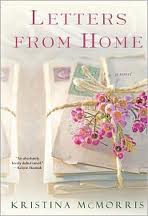Today’s guest post is from Lindsey Leavitt, author of Princess for Hire and the newly released Sean Griswold’s Head. Here, she shares her experience about her Skype visits with mother-daughter book clubs and offers advice for hosting a Skype visit of your own.
Six eleven-year-old girls sip hot cider from an antique tea set. Their mothers’ sport tiaras and pink feather boas. I’m wearing pearl earrings coupled with… pajama bottoms. Not that the girls’ know this. I’ve positioned my webcam so they don’t see my “work pants,” only my office bookcase and my well-dressed upper-half.
We’re having a lovely Skype-an-Author book chat about my book, Princess for Hire. Skype allows me to meet with school groups, libraries, and mother-daughter-book clubs across the country. I don’t have to travel, or even get a sitter (as a west-coast author, my kids are often still asleep!). And the best part for the group is—I’m free.
And I’m not alone. Many technology-savvy authors are jumping on board to include free 20-30 minute skype sessions with readers. To find out more, check out the Skype an Author Network.
Longer sessions are also available for a fraction of an author’s usual speaking fee. Authors do Q&A sessions or presentations on revision, rejections, and author lifestyles (yes, sometimes I hold up my foot to show my slippers). And if you have a favorite author, especially those who are a little more new and still trying to build up a fan base, send them an email. You never know who will say yes.
Below are some tips on hosting an Author Skype visit of your own.
1. Tools: You’ll need a computer with a webcam, and to register for Skype (www.skype.com) If you haven’t used Skype in the past, do a test run with a friend before the big day. Also, make sure you add the author’s username to your Skype friends.
2. Preparation: Read the book. You can also read the body of work of a favorite author over a few months and Skype with her after. Have each participant write out a question or two on a note card beforehand. Sometimes the girls get nervous and blank out, so this keeps the conversation going. And see if the author has a website—many questions are already answered on their bio or books page.
3. Set up: Set the computer in a place that everyone can see the author, but also allows the author to see the readers and engage with the audience. Some authors will be more willing to Skype if they know they’re speaking with more readers (read: More book buyers), so combine with a youth group, library group, or have regular members bring along a friend.
4. Discussion: I’ll often have the group call me right after they’ve just discussed the book as a group. More questions come up this way and it makes the author portion more organic. See that each member has a chance to interact with the author.
5. Make it fun: So this is pretty much a no-brainer, but have fun with it. If the author’s book is on aliens, make alien sugar cookies. Include all the great things you usually do at book club. Authors love to see our books celebrated. And after the visit, a thank you note is always appreciated.
Tomorrow I’m posting a review of Sean Griswold’s Head. While I haven’t read Princess for Hire yet , Booklist has a lot of nice things to say about it:
“Fifteen-year-old Desi feels she is wasting her life in Idaho, between her job at the pet store, where she has to wear a groundhog costume, and her bitter ex-friend Celeste, whose father was sent to jail by Desi’s attorney dad. So when Desi is offered an enchanted position as a “sub” for real princesses, why would she say no? With a desire to help these girls—whether it’s an older sister’s crash diet or a rite-of-passage ceremony—Desi gets in some hot water and in the process discovers some important truths about her own life. With creativity and a sense of humor, this first novel is a delightful romp. The provision of magic makes all things possible, and the sense of place is vividly realized. Fans of The Princess Diaries (2000) and Ella Enchanted (1997) will be pulled in by Desi and her refusal to accept the status quo. Fortunately for them, Leavitt’s first novel is not her last—she is working on a sequel. Grades 5-8. ”
The sequel, Princess for Hire: The Royal Treatment, is due out in May.









